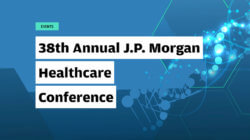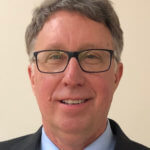February 6, 2020
Taking Healthcare’s Pulse: 4sight Health’s 2020 J.P. Morgan Conference Report

Each year on the second Sunday in January, the healthcare world descends on San Francisco for the J.P. Morgan conference and the circus that surrounds it. For the next week, more suits wander in and around Union Square than the rest of the year combined. They spend exorbitant sums to connect, engage and negotiate with one another.
The business of healthcare has never been better. Only a quarter of the 20,000-plus professionals actually attend the conference at the Westin St. Francis. Outside the conference halls is where the real action happens. Given its scope and January timing, the J.P. Morgan conference is the ideal environment to sift for clues as to what will happen in the coming year.
It is in this spirit that 4sight Health has assembled its first J.P. Morgan conference report. In many respects, our three-part report resembles an impressionist painting more than a detailed rendering. Ed Chadwick, John Moore and I each share our individual slices of the conference, which together give a sense of the whole. Here are the component parts.
- Ed Chadwick attended all 27 not-for-profit health system presentations, and has synthesized his observations in an executive summary that accompanies his full report. Read Ed’s summary to learn both what was and was not discussed. The full report is available on the 4sight Health website.
- In his “Much Ado About Nothing” report, John Moore takes a Shakespearean view of all the conference’s “sound and fury” and concludes that it signifies very little. And that’s the rub!
- In my “Healthcare has No Clothes” commentary, I contrast the conference’s ostentatious display of wealth with the homelessness and Dickensian misery on the streets surrounding the conference venues. What does this tell us about the current state of American healthcare?
This J.P. Morgan issue is a new initiative for 4sight Health. Let us know whether you find it useful and give us suggestions for making it better. Enjoy!
CHADWICK ANNUAL SYNTHESIS: A LOOK INSIDE J.P. Morgan 2020
 By Edward Chadwick, Founder of Integrated Healthcare Financial Strategies LLC
By Edward Chadwick, Founder of Integrated Healthcare Financial Strategies LLC
The following is a synthesis of the tax-exempt track at the January 2020 J.P. Morgan Healthcare Investor Conference held in San Francisco on January 13-16, 2020. This narrative highlights common themes, organizations pushing the edge on transformation, and some thoughts on what was not discussed but should have been. This was the 10th year of the tax-exempt track and 38th year overall for the annual conference. This writeup focuses on the tax-exempt sessions, although there were almost 450 presentations by investor-owned organizations that are also trying to change the future of healthcare. Read the full report.
Common Themes
There was much passion, humility and celebration of what progressive health systems are doing to better meet the needs of their communities. When watching 27 presentations by leading health systems, many common themes emerge, as we all face similar industry challenges and opportunities. Leadership teams and boards can look at the following list as another data point to test their own playbooks. While most core strategies have continued over the last several years, this write-up also comments on trending of focus compared to presentations at prior conferences.
Patient/consumer centricity and experience continue to be a commitment for all systems, with even more emphasis on putting the patient and their families at the center of care and business model redesign and strategic focus. There is growing emphasis on moving care closer to the patient through ambulatory growth and virtual means, and out of traditional inpatient settings.
Safety and quality improvements are a continued expectation for all systems, with some systems committed to being High Reliability Organizations with zero serious safety events.
Growth, scale and diversification remain top priorities for most systems, although approach, pace and value proposition vary across entities and markets. While there is still enormous value to be tapped, some systems are truly differentiating themselves at a pace not seen previously.
Affordability of healthcare is a widespread concern, with broad recognition that the current system is already unaffordable.
Efficiency and performance improvement continue to be important for most systems to offset the gap between payment rate increases and input inflation. Many systems are proud that they leverage business discipline and push for wide adoption of evidence-based practice.
Value-based care and population health received more discussion than in recent years, with many health systems describing benefits of having their own health plans, expanded Medicare Advantage participation, risk-based contracts, direct-to-employer relationships and ongoing programs to reduce PMPM costs.
Transformation, disruption and innovation are driving many health systems that believe they must accelerate transformation before others disintermediate them. While discussed in prior years, urgency and effort to push for transformation appear to be increasing.
Digital enablement, including virtual care, data analytics, AI and robotic process automation (RPA) are now uniformly discussed as essential to better serve patients and members, although healthcare still lags other industries.
Genetics and precision medicine are growing as strategic priorities, particularly for cancer care. Multiple organizations are now pursuing full genome sequencing for large numbers of individuals in their communities, and technologies such as CAR-T therapies, CRISPR and regenerative medicine have moved from research to care delivery.
Partnerships and commercialization are expanding in popularity as ways to gain access to additional capabilities and accelerate transformation. This includes partnerships with Google and Microsoft, as well as a plethora of relationships to improve care, patient experience or cost structure. Health systems are expanding efforts to commercialize their own perfected administrative capabilities and discoveries.
Social Determinants of health receive wide recognition, as health systems need to partner with other organizations and engage with individuals differently to improve health in their communities.
Unwavering Mission Commitment describes many organizations. This includes providing care for at risk populations as reflected in community benefit spending, the obligation to maximize impact on communities served, as well as investments in teaching the health professionals of tomorrow and care discovery.
Culture and commitment to employees continue as areas of focus, including diversity and inclusion, talent development, and more recently, broader commitment to caregiver well-being.
Treasury management remains important as most organizations are half bank and half operating unit based on the respective size of assets and cash flow. Balance sheets generally strengthened in 2019 as a result of strong investment gains and solid operating performance.
Common Electronic Medical Records (EMRs) play a critical part of standardizing high-quality care, but discussions about EMRs had less prominence than in prior conferences.
Organizations “pushing the edge” — presenting tax-exempt systems ranged in size from sub-$2 billion to $30 billion of revenue. They included regional and national systems, health systems with robust academic missions, integrated plan/provider systems, and specialty organizations. Some benefit from being in high growth markets, others are in stable or declining markets. All face a rapidly changing healthcare environment. Each organization had 25 minutes to succinctly share their situation, strategies and successes. A synthesis of the presentations by those moving particularly fast to transform is included in the full report.
Critical issues not addressed at the conference given time constraints and general desire to tell a positive story in front of peers, prospective partners and the financial community, it is not unreasonable for leaders to focus on “the good stuff” and avoid “uncomfortable truths.” Sometimes that is unfavorable financial performance, more broadly it is about industry exposures. Two industry issues not really discussed but critical to future viability are risk of major future payment reductions, and the fact that the industry remains massively subscale. Both of those topics have enormous future ramifications and are discussed in more detail in the full report.
JPM’20 – MUCH ADO ABOUT NOTHING
By John Moore
 Last week was the annual pilgrimage to San Francisco to attend the J.P. Morgan (JPM) conference. Actually, I do not attend the JPM conference itself, but several of the satellite events that happen concurrently. Home base is typically the well-orchestrated, albeit slightly hyped, Start-up Health Festival but most of my time is spent attending meetings set up in advance.
Last week was the annual pilgrimage to San Francisco to attend the J.P. Morgan (JPM) conference. Actually, I do not attend the JPM conference itself, but several of the satellite events that happen concurrently. Home base is typically the well-orchestrated, albeit slightly hyped, Start-up Health Festival but most of my time is spent attending meetings set up in advance.
Why attend?
This event, always at the beginning of the year, brings together a who’s who of all sub-sectors of the healthcare industry. It provides an opportunity to get an early pulse on the industry identifying trends and points to focus our research in the year to come. Sure, we lay out our research calendar for the coming year in late fall, but JPM provides an opportunity for fine-tuning.
Coming to JPM, I had high hopes of hearing something new or at least remarkable to report. Sadly, such was not the case. Instead, I saw an industry of excess – fancy suits, remarkable meals and receptions, along with hotel rooms exceeding $2000/night to be close to the action. It was disturbing to see such excess in an industry that is the number one cause of U.S. citizen bankruptcy. When do we, as a society simply say: “Enough already.”
Unfortunately, this industry has extremely powerful political connections (just look what they did to surprise billing legislation at year-end). Change will not come readily. Calls for disruption are a ruse as even Big Tech is being assimilated by the healthcare Borg.
Throughout the event and the multiple receptions I attended, I was struck by the lack of anything really new being announced or discussed. The same buzzword topics of interop, AI/ML, physician burn-out, population health, coupled with acronym de jour SDoH, drug pricing, consumerism, access, etc. were all quite evident but relatively meaningless. There was nothing new, at least for this analyst – it has all been said before.
A couple of VC folks wanted me to get excited about the new pharma start-up, EQRx. I also attended a session on EQRx sponsored by STAT News. The gist of the EQRx message: Build a new data-driven R&D model for drug discovery to lower development costs and speed time to market all in the hopes of addressing the drug pricing problem in the U.S.
Maybe EQRx is on to something. I have my doubts. Having lived overseas and been able to purchase the exact same medications for ten times less than in the States, one has to wonder: Is it the drug development process or the lack of good negotiation and the many middlemen in the drug delivery supply chain that contribute to world-leading pricing for medications in the U.S? I would easily argue the latter.
Leavitt Partners once again hosted a very good briefing on the policy of healthcare in this country. This event brings together some heavy hitters in the industry to hear the latest from Governor Leavitt and his team. The key takeaway: Legislators and the public have reached their limit on healthcare spend. If the industry does not accelerate its move to value-based care (VBC) and payment quickly, the hammer will drop and Congress will introduce flat, by-edict pricing.
While I agree with this thesis, I wonder, what is the time horizon?
The industry as a whole has been mind-numbingly slow in its migration to value, milking fee-for-service for all its worth. Commercial payers have been slow to truly shift risk to providers for fear of becoming a low margin, third party administrator (TPA). Most provider organizations do not want too much disruption to their existing model as the move to value requires strong leadership, vision, and commitment measured in years. The change management issues for providers are significant – as was repeatedly referenced at last year’s annual ACHE congress.
In a forthcoming Chilmark Research report on providers’ efforts to define value from their population health management investments, we found that the most sophisticated and advanced providers on the path to VBC have spent years – typically 5-8 years – to get to a reasonable level of competency and alignment in their organization. I left the Leavitt meeting wondering: Do providers, the majority of which have yet to make a serious move to VBC, have enough time before Congress simply drops the hammer?
Yet despite some depressing observations at JPM, I did find reason for hope. Most of the meetings I had were with leaders of companies that are clearly on a mission to improve the delivery of care. These companies tend to be extremely focused on tackling a discreet problem in the industry. No, individually they are not likely to change the industry writ large, but they have the potential to make an impact. It is these companies and their leaders who keep me going. Thank you for giving this ol’ cynic hope.
HEALTHCARE HAS NO CLOTHES: J.P. MORGAN 2020
By David W. Johnson
Even with advance planning, hotel rooms in and around Union Square during the J.P. Morgan Healthcare conference average $1,500 per night. I got lucky. Using the Hotels Tonight app, I reserved a room for $600 per night at the Hotel Whitcomb on Market Street, across from UN Plaza, the Public Library and the Orpheum Theater (where Hamilton is playing).
It was a fifteen-minute walk from the hotel to Union Square. I may as well have been in Kolkata (formerly Calcutta). On my walks to and from meetings, meals, presentations, receptions and parties, I stepped through hundreds of homeless people. Their encampments had taken over entire streets. Addictive behaviors, mental illness, rampant chronic disease and despair were on full and continuous view. 
Twenty thousand healthcare professionals shared their neighborhoods for five days. The contrast between these well-heeled professionals and San Francisco’s teeming homeless population was stark, profound and even ironic, given the airtime spent discussing the social determinants of health at the conference.
At 18% of the U.S. economy, healthcare is experiencing a gilded age. The industry’s ostentatious wealth was evident everywhere I ventured. That wealth comes from the people. Hard-working Americans sacrifice wage increases for ever more expensive and porous health insurance. Like robber barons during the original gilded age in the late 1800s, healthcare’s robber barons prosper amid squalor.
Trying to make sense of this dichotomy, my first inclination was to write a healthcare commentary modeled on Charles Dickins’ Tale of Two Cities. “It was the best of times. It was the worst of times. It was a time of unprecedented medical breakthroughs and snowballing medical bankruptcies. It was a time of megamergers and declining life expectancy…”
On reflection, however, that approach seemed antiseptic and too clever by half. It didn’t do justice to the human misery unfolding every day not only on San Francisco’s mean streets, but throughout America’s low- and middle-income communities.
I decided that applying Hans Christian Andersen’s children’s story “The Emperor’s New Clothes” to current healthcare dynamics would hit closer to the mark. First published in 1837 and translated into over 100 languages, Andersen’s story captures the type of willful ignorance that permeates and distorts U.S. healthcare delivery.
Here’s the plot in a nutshell. Con men posing as weavers convince a vain emperor that they can weave him the most beautiful garment ever made out of “invisible thread.” Here’s the catch. Only intelligent and well-mannered people would be able to see the garment. The emperor buys the con and decides to parade his new outfit before all his subjects.
Not wanting to contradict the emperor, be ill-mannered or display their ignorance, everyone from government ministers to ordinary townsfolk go along with the charade. Some flatter the emperor. Most are uncomfortable but remain silent. Finally, a child along the parade route sees the truth and shouts that the emperor is wearing no clothes.
“The Emperor’s New Clothes” is a cautionary tale for healthcare executives. Payers, providers and suppliers (e.g. the Healthcare Industrial Complex® or “System”) are the emperor. Fee-for-service medicine is the invisible thread. The weavers are the advisors, consultants and government officials who keep the System working for entrenched incumbents.
Along the parade route, regular Americans know there is something wrong but are too afraid, ill-informed or powerless to do anything about their concerns. Among the crowd, there are value-based revolutionaries ready to overturn the System. While they are gaining traction, they have not reached critical mass. The System still has the illusion of clothes.
U.S. healthcare has pursued value-based care delivery for over a decade with little progress. Healthcare costs keep rising as the industry consumes an ever-larger share of the nation’s economy. At the same time, health outcomes are not improving, physician practice patterns are not changing, and Americans live in fear of paying for a disease or illness.
Given their frustration with the lack of progress, the question arises as to how much more time Americans will give the healthcare industry to deliver on promised improvements. Their patience is not infinite. If the industry cannot improve fast enough, politicians could offer expedient and counterproductive policies, such as Medicare for All, rationing and/or price controls, to placate voter anger. Indeed this is already beginning to happen.
My belief is that the 2020s will be the most turbulent decade in healthcare’s history. One way or another, Status Quo Healthcare will die. The industry must demonstrate that market-based reforms work or risk the types of bad policy prescriptions referenced above. Either way, U.S. healthcare will experience breathtaking changes of a magnitude equivalent to the massive societal changes that occurred in the 1960s.
As happened in the 1960s, the pace of change will begin slowly and then accelerate. Like crewcuts on college campuses in the early 1960s, fee-for-service payment is common now but will be nonexistent by the decade’s end. Full-risk contracting (bundles for episodic care and capitation for population health) or government-set prices for healthcare treatments will dominate the land.
At the end of “The Emperor’s New Clothes,” the crowd takes up the boy’s chant. Now fully exposed, the vain emperor knows the truth but continues to parade naked through the streets. Healthcare can choose a happier ending with better clothes. One where outcomes matter, customers count and value rules!
Authors
 Edward Chadwick, Founder of Integrated Healthcare Financial Strategies, LLC wrote this report. He has historically drafted a summary of both the annual JPM and Citi/AHA/HFMA Healthcare Investor Conferences. Mr. Chadwick has been system CFO of a national Catholic System (Trinity Health), a top-20 academic health system (Wake Forest), and a fully integrated plan/provider (Henry Ford Health System). He holds an MBA from the University of Chicago Booth School of Business. He can be contacted at edward.chadwick@ihfstrategies.com or linkedin.com/in/edward-chadwick
Edward Chadwick, Founder of Integrated Healthcare Financial Strategies, LLC wrote this report. He has historically drafted a summary of both the annual JPM and Citi/AHA/HFMA Healthcare Investor Conferences. Mr. Chadwick has been system CFO of a national Catholic System (Trinity Health), a top-20 academic health system (Wake Forest), and a fully integrated plan/provider (Henry Ford Health System). He holds an MBA from the University of Chicago Booth School of Business. He can be contacted at edward.chadwick@ihfstrategies.com or linkedin.com/in/edward-chadwick
 John Moore, CEO of Chilmark Research, wrote the article “JPM’20 — Much Ado About Nothing,” which was first published on the Chilmark Research website. Chilmark Research is founded on the premise that conducting the best research possible will ultimately lead to improvements in the quality of care patients receive. Chilmark focuses on specific subsectors of the health IT landscape that can transform the delivery of care, including: analytics, care management & coordination, interoperability, population health management, engagement, provider-payer convergence. Reach John at john@chilmarkresearch.com and follow him on twitter @john_chilmark.
John Moore, CEO of Chilmark Research, wrote the article “JPM’20 — Much Ado About Nothing,” which was first published on the Chilmark Research website. Chilmark Research is founded on the premise that conducting the best research possible will ultimately lead to improvements in the quality of care patients receive. Chilmark focuses on specific subsectors of the health IT landscape that can transform the delivery of care, including: analytics, care management & coordination, interoperability, population health management, engagement, provider-payer convergence. Reach John at john@chilmarkresearch.com and follow him on twitter @john_chilmark.



